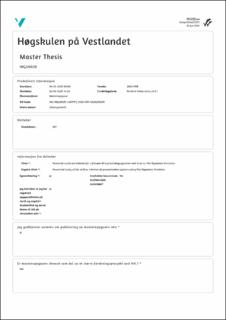| dc.description.abstract | Smoke control systems are used to prevent the spread of fire and smoke within buildings. Typical areas to be protected are the egress routes, atriums, and areas with larger fire loads. Smoke control systems prevent excessive financial and material losses. However, larger fire sections within buildings can be allowed by improving the fire safety with a smoke control system.
Extraction systems and pressurization systems are commonly used principles. The extraction system prevents the spread by extracting the smoke from the fire compartment. The pressurization system prevents the spread by pressurizing the compartments to be protected.
The pressurization system must safeguard the pressure criterion and the airflow criterion. The pressure criterion prevents the spread of smoke through gaps and cracks (a closed but leaky door), by creating an overpressure in the adjacent compartment to the fire compartment. The airflow criterion prevents the spread of smoke through larger openings like open doors, by creating an airflow from the adjacent compartment to the fire compartment.
The airflow criterion is investigated with Fire Dynamics Simulator (FDS). FDS is a Computational Fluid Dynamics (CFD) code for fire-driven fluid flows designed for fire applications. FDS allows the user to simulate the outcome of a defined fire scenario. For example, it is possible to assess how long tenable conditions can be safeguarded in a certain area. The outcome of a fire scenario can be simulated many times, which is an advantage when the goal is to study the outcome of minor parameter changes. The use of CFD codes is an alternative to full-scale experiments, which are often limited to cost.
Density, mass fraction and volume fraction of various gas species, pressure difference, temperature and visibility of defined areas, is an example of data possible to collect from full-scale experiments. However, such measurements in high quantities are limited to the number and types of devices. Old devices (and perhaps new) could as well be affected by decreased accuracy. FDS conducts precise mathematical calculations in large quantities. The disadvantage of CFD models is the high demand for computational power. A 10-minute scenario can take days to simulate, and in most cases, it is necessary to perform multiple simulations to address all uncertainties.
Six model geometries are used to study the airflow criterion between two compartments: the fire room compartment and the pressurized compartment. Factors such as compartment sizes and opening areas are altered between the model geometries. Model geometries with a lobby compartment implemented between the two main compartments are also used to assess the impact of this. For each model geometries, scenarios are conducted where the HRR (heat release rate, or fire size) and the air supply rate (the rate of the pressurization system) is altered.
Results from the conducted simulations show that as the HRR increases, the density of the fire products increases in the pressurized compartment. As the air supply increases the density of the fire products decreases. Altered compartment sizes, ventilation opening areas (openings to the outside which supplies the fire with oxygen) and ventilation opening locations, has an impact on the product density development in each compartment. For the case with a lobby compartment implemented between the two main compartments, the product density is decreased in the pressurized compartment, compared to the equivalent case without a lobby compartment. | en_US |

